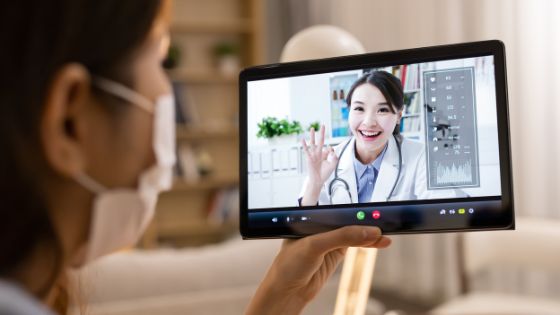With the increasing prevalence of chronic diseases and the advancements in information technology, remote monitoring has become an invaluable supplement for a patient’s health care team. By performing a series of simple, painless procedures in the comfort of your own home using a remote medical monitor device, you can transmit health data to your physician team. This type of monitoring has been shown to reduce hospital admissions and other readmissions, as well as hospital lengths of stay and costs. Here is what you need to know about remote patient monitoring.
What is Remote Patient Monitoring?
Remote patient monitoring (RPM) is a practice where consultation between the patient and physician is done remotely. This involves comprehensive consultation, where the patient and physician can both be seen in the comfort of their home. Patients with chronic diseases use remote monitoring on a short-term basis for diagnosing and treating acute illnesses.

How Does Remote Patient Monitoring Work?
RPM is done using a remote medical monitoring device, a small electronic device that you can use at home to measure and record biometrics such as temperature, pulse, blood pressure, respiratory rate, and blood oxygen levels. The data from this device can also be transmitted to your physician. Your physicians can then review the data and give treatment recommendations. This can help patients avoid unnecessary hospitalization and decrease the effects of chronic diseases. Also, record-keeping can be done by the patient, allowing you to track your health and progress.
Why is Remote Monitoring Used?
Remote monitoring is used for chronic patients, particularly those with chronic heart failure, COPD (Chronic Obstructive Pulmonary Disease), diabetes mellitus, asthma, hypertension, and other chronic diseases. These patients risk having an acute health crisis from their disease. By using RPM, the risks of this health crisis can be limited. Using RPM, a patient can be seen in their home by their physician without suffering the effects of extended hospitalization. Also, it is used for patients who have suffered from an acute illness and need to be monitored while they recover. This can help reduce hospital costs and shorten hospital lengths of stay and readmission rates.
How Does Remote Patient Monitoring Help You?
By using remote patient monitoring, you can get the medical supervision you need to live a healthy life without leaving your home’s comfort. It also allows you to track your health and progress more easily than if you regularly visit your physician’s office. During each session with a remote medical monitor, data from various biological indicators such as temperature, pulse, blood pressure, respiratory rate, and blood oxygen levels are monitored. This data can be transmitted to your physician and enhanced by consulting the patient regarding their symptoms. Your physician can also use the data to make recommendations for the best health care treatment for you, which can help you avoid unnecessary hospitalization and medication costs. Also, remote patient monitoring can help improve your health and quality of life through continuous monitoring.
How to Pay For Patient Monitoring
Some programs, such as Medicaid, Medicare, or a private insurance plan, cover remote patient monitoring. This allows you to receive services at a discounted rate, saving you money. Contact your insurance agent, or provider can learn about these discounted rates. Your physician can also help you explore hospital discounts for remote patient monitoring. In addition to the programs listed above, many states offer their coverage for remote patient monitoring. It would be best to find out what your particular state offers and whether you are eligible by checking with your state’s Medicaid office or Department of Aging services. For example, the Texas Medicaid remote patient monitoring program is available to eligible patients in Texas.
Conclusion
Remote patient monitoring is a cost-effective way for patients to get medical care from their homes. It has advanced in recent years and is an effective method for communicating with your physicians and receiving health care. Remote monitoring allows you to maintain a better quality of life while receiving excellent medical care. If you or someone you know suffers from a chronic illness and has access to the services of a physician, then RPM can be a good investment to help you live a healthy life.
